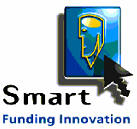
The Radox® works by using intense electromagnetic radiation across a broad spectrum including UV and infrared. Conventional UV digestion equipment tends to use low-pressure UV lamps (usually operating at less than 40 watts) producing ultraviolet radiation mainly in the region of 253.7nM. It has been found with the Radox® that by exposing the sample to a broader higher intensity radiation including the infrared a sample can be digested far more efficiently and quickly than by conventional UV methods. The radiation source is a medium pressure mercury vapour lamp having an output of at least 600 watts.
The radiation source used for the Radox® emits a broad spectrum from the ozone-producing region (< 185nM) to the infrared (> 1000nM). In addition to producing ozone, hydroxyl ions and other free radicals the radiation, in combination with the heat generated, is sufficient to excite and break many of the molecular bonds present in organic material. A combination of the greater energy employed and the novel sample exposure system also allows the Radox® to cope with semi-opaque and turbid samples.
Oven Construction
The oven housing for the lamp and exposure unit is constructed from special heat-sink components, surrounded by high efficiency low-noise cooling fans.


Contact | |
Analytical Sciences UK |
|
Hill Lodge Laboratories, Tewkesbury, England,
GL20 7PG Phone: +44 (0)1386 725354
Fax: +44 (0)1386 725690
| |
Lab Analysers and Systems Engineering | |

The oven is sealed to ensure there is no dangerous UV light leakage; this also
prevents egress of the ozone produced by the mercury vapour lamp.
Sample Exposure System
The sample is introduced into the exposure system by a peristaltic pump and passed through under pressure, during which time it is both heated and irradiated. The sample flows through a heat-controlled conduit shaped as a serpentine track, sealed by a quartz cover plate transparent to low wavelength electromagnetic radiation. The depth of the track is 250mm, this leads to a more efficient oxidation and the ability to oxidize semi-opaque samples which conventional UV systems struggle with.
Sample Digestion (RADOX)